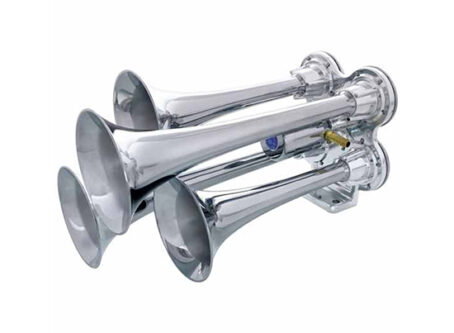Michigan’s stricter distracted driving laws take effect soon
In an effort to reduce traffic fatalities across the state, Michigan will soon be enacting stricter laws against distracted driving.
Signed into law by Gov. Gretchen Whitmer on June 7, HB 4250 states that “an individual shall not hold or use a mobile electronic device” while operating a motor vehicle, commercial motor vehicle or a school bus. The new law is set to go into effect on June 30.
Under the new regulation, the “use a mobile device” is considered any instance in which a driver uses an electronic device to do these things:
- Send or receive a telephone call
- Send, receive, or read a text message
- View, record, or transmit a video
- Access, read, or post to a social networking site
The state says that one in four distracted driving crashes is related to the use of an electronic device.
“Too many Michiganders have lost loved ones to distracted driving, and everyone should be safe on their way to school, home or work,” Whitmer said in a statement. “We developed our last Strategic Highway Safety Plan in 2019, and already we have seen a reduction in the number of fatalities caused by distracted driving. These bills are another step toward reducing that number even further. Our goal is to see zero traffic deaths by 2050, and I know that by working together we can get it done.”
According to the state’s most recent Strategic Highway Safety Plan, introduced in January, measures to curb distracted driving from 2017 through 2021 have resulted in a decrease of 6% in distracted driver fatalities.
There are a number of exemptions included in the new legislation. The bill lists some acceptable instances to use a mobile electronic device while driving. Among them:
- Emergency purposes, including calling or texting a 911 system, or making an emergency call to a law enforcement agency, health care provider, fire department, or other emergency services agency or entity to report to appropriate authorities any of the following:
- A fire, traffic accident, serious road hazard, or medical or hazardous materials emergency.
- An operator of another motor vehicle who is driving in a reckless or otherwise unsafe manner or who appears to be driving under the influence of alcohol or drugs
- A crime being committed.
- The use of a global positioning or navigation feature of a mobile electronic device if the information is not entered by hand into the device.
- When the device is in a voice-operated or hands-free mode and the operator of the motor vehicle does not use the operator’s hands to operate the device, except for either of the following:
- Using a single button press, tap, or swipe to activate or deactivate a feature or function of the mobile electronic device or to select a telephone number or name.
- Using a mobile electronic device that is integrated into a motor vehicle and utilizes the user interfaces that are permanently installed into the motor vehicle.
- When the device is used for the sole purpose of continuously recording or broadcasting video inside or outside of a motor vehicle.
- When the device is placed in a mount and used in any manner listed above.
Additionally, the use of CB radios by truckers is permitted under the new legislation.
On top of cracking down on the use of mobile devices, the new law also prohibits the act of reaching for an electronic device while driving.
According to the bill’s text, “reaching for a mobile electronic device in a manner that requires a driver to maneuver so that the driver is no longer in a seated driving position, restrained by a seat belt that is installed as required by 49 CFR 393.93 and adjusted in accordance with the vehicle manufacturer’s instructions,” is also considered a violation.
With the new legislation, distracted driving is now a primary offense – meaning you can be pulled over solely for the violation. However, a provision was added stating law enforcement “shall not search a motor vehicle or the driver or passenger in the motor vehicle solely because of a violation” of the state’s distracted driving laws.
As far as penalties go, drivers of commercial vehicles and buses will be fined $200 for a first offense or 32 hours of community service, or both. Subsequent violations will result in a $500 fine or 48 hours of community service, or both. The fines imposed on drivers of buses and CMVs is double the amount for other vehicles.
Additionally, fines are doubled if the distracted driving violation occurred during “an accident for which the individual is at fault.”
The state defines distracted driving as “any activity a person engages in that takes their attention away from driving” adding that “these distractions can be visual (eyes off the road), manual (hands off the wheel), or cognitive (mind off the drive).” Some examples of distractions given by the state include talking to passengers, eating or drinking, adjusting the radio, or being fatigued.
“Sending a text message increases the risk of collision by 23 times,” the state’s Office of Highway Safety Planning said in the 2023-26 Strategic Highway Safety Plan. “Each time a driver looks away to send a text, they are concentrating on something other than the road for 4.6 seconds of every 6 seconds. At 55 mph, this is equivalent to driving the length of a football field blindfolded.”
The agency says that respondents to a survey taken prior to drafting the 2023-26 safety plan indicated distracted driving was their No. 1 safety concern, followed by impaired driving and safety roadway improvements. LL









